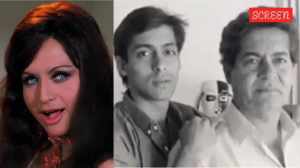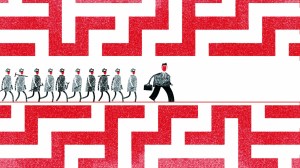In Letters and in Spirit
From the late 1930s to well after independence, Phillips Talbot sent letters to an American think-tank on how to understand India. His accounts of meetings with leaders like Nehru, Rajaji and Jinnah provide a first-hand assessment of that fascinating decade

An American Witness to India’s Partition
Phillips Talbot, Sage, Rs 720
So possessive were the british of the brightest jewel in their Crown that until well into the Second World War they never allowed even an American diplomat near the Indian capital. To be sure, an American consulate was opened in Calcutta as early as 1792, and two more were added later in Bombay and Madras. But their function was strictly confined to commerce. Otherwise also, America’s contact with India was scant, while Americans, especially missionaries, travelled to China in hordes. No wonder, China’s image in the US was determined by Pearl S. Buck’s Good Earth, India’s by Katherine Mayo’s Mother India that the Mahatma described as a “drain inspector’s report”.
Towards the end of the 1930s a think-tank in New York thought of sending a scholar to India to explore the dynamics of this diverse and complex land. It could not have made a better choice than of a young and ambitious reporter named Phillips Talbot whose task was to write reports and assessments not for publication. The present book is a collection of his “letters” to his boss from 1938 — the year he partook of the annual training course in London of the heaven-born ICS — until 1950. And what a delightful compilation it is of insightful and lucid essays on Indian history of that volatile period, leading up to Independence and Partition. Eleven years after returning home from India, Talbot served as assistant secretary of state for Near East and South Asia in the Kennedy administration. Both John Kenneth Galbraith and Chester Bowles had recommended him to JFK, but what they said of him afterwards would not bear retelling. That, however, in no way affects the superb quality of Talbot’s book.
Eminent Indian historian B.R. Nanda — but for whom Talbot’s dispatches might never have been exhumed from storage — has contributed a thoughtful foreword that enhances the book’s value. “Not the least interesting parts of this book,” he writes, “are Talbot’s perceptive profiles of Indian leaders — Gandhi, Nehru, Patel, Jinnah and others whom he met.” The examples Nanda has chosen are best read as he has quoted them. To these I must add Talbot’s comment on another outstanding Indian, C. Rajagopalachari, better known as Rajaji. “His mind,” notes Talbot, “is like acid that eats away alloy from pure metal… One question from me elicited answers in six parts.”
More impressively, even at a young age Talbot’s judgments were penetrating and accurate. He was convinced that at the end of the war Britain would be too exhausted to sustain its empire and would have no option but to leave India. The only question in his mind was whether there would be one successor government or two. In the midst of the Quit India Movement (1942), he predicted that there would be “no violent revolt” against the British, but because of “antagonism” between the Congress and the Muslim League, violence could be immense. Having visited Gandhi’s ashram, met Nehru at various Congress gatherings, interviewed Jinnah at the Lahore session of the Muslim League where the Pakistan resolution was passed, witnessed the Great Calcutta Killings as a result of the League’s Direct Action in August 1946, travelled with the Mahatma in Noakhali in April 1947 and, above all, seen the massacres on both sides of the divide, together with the largest mass migrations in peacetime in history before and after the “tryst with destiny”, Talbot concluded, “It would have been better if the British had gone some years earlier.”
Talbot’s deep relationship with India did not end with that of the Kennedy administration that was inherited virtually unchanged by London Johnson. As president of Asia Society for long years he kept his contacts warm and visited India and neighouring countries often. This has enabled him to pen a brief Afterword on how the region looks to him on the 60th anniversary of Independence. His verdict on this country: “India has not only confirmed its regional pre-eminence but has become a significant all-Asian and global presence. Domestically, its democratic political system, though challenged at one moment by Mrs Gandhi’s Emergency rule, has survived as the sturdy framework of participatory government.”
He adds: “Pakistan has not been so fortunate. Its long sequence of authoritarian governments under both military and civilian rulers has reflected the profound problems of an inadequately organised state.” He could not have been fairer.



- 01
- 02
- 03
- 04
- 05




























